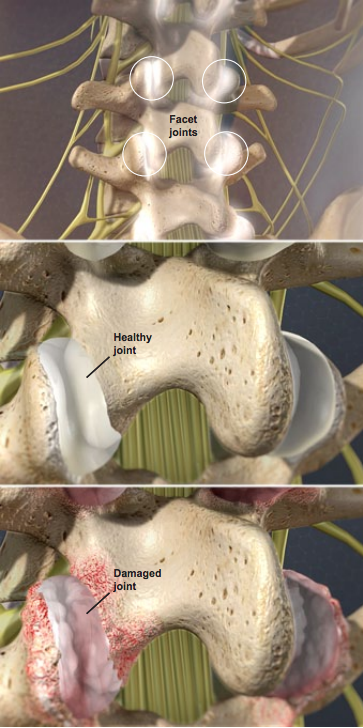Overview
This condition is a deterioration of the facet joints, which help stabilize the spine and limit excessive motion. The facet joints are lined with cartilage and are surrounded by a lubricating capsule that enables the vertebrae to bend and twist.
Joint Damage
Facet joint syndrome occurs when the facet joints become stressed and damaged. This damage can occur from everyday wear and tear, injury to the back or neck or because of degeneration of an intervertebral disc.
Cartilage Loss
The cartilage that covers the stressed facet joints gradually wears away. The joints become swollen and stiff. The vertebral bones rub directly against each other, which can lead to the growth of bone spurs along the edges of the facet joints.
Symptoms (lumbar)
If the lumbar, or lower spine, is affected pain may be felt in the lower back, buttocks and back of the thigh.
Diagnosis
Each facet joint in the spine transmits a pain signal via a nerve known as the medial branch. These nerves can be anesthetized with a Medial Branch Block in order to confirm that these joints are the true pain generator.
Treatment
Facet joint syndrome is first treated conservatively with rest, ice, heat, anti-inflammatory medications, and physical therapy. In addition, facet joint blocks may be administered not only to diagnose facet joint pain but also to treat it. If non-surgical methods fail to relieve pain, a Radiofrequncy Neurotomy of the lumbar facets may be recommended.
Video Overview

